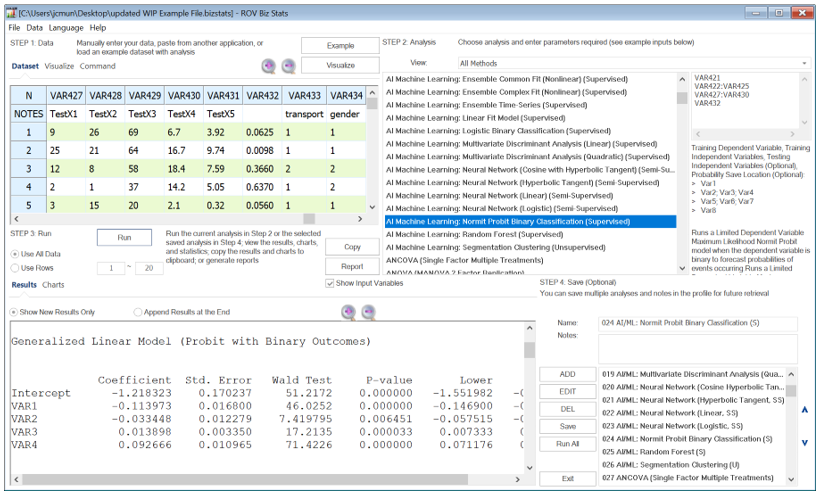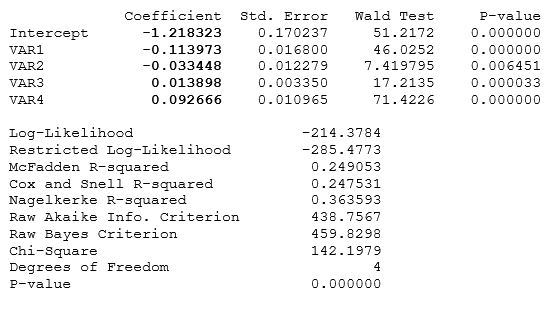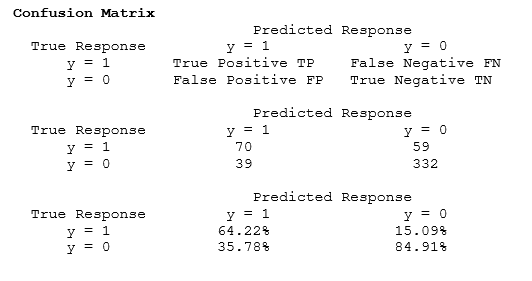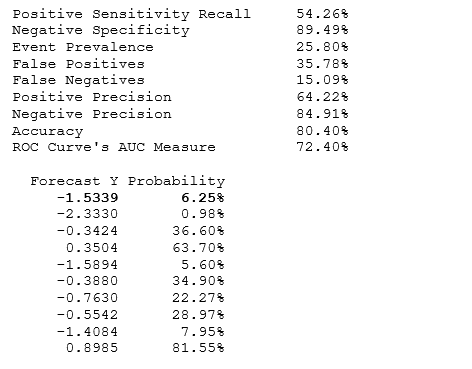- Related AI/ML Methods: Logistic Binary Classification, Multivariate Discriminant Analysis
- Related Traditional Methods: Generalized Linear Models, Logit, Probit, Tobit
The AI Machine Learning Normit Probit model (Figure 9.79) is a popular alternative specification for the Logistic binary response model. It employs a Normit-Probit function estimated using maximum likelihood estimation and is also sometimes called a Probit regression. The Probit and logistic regression models tend to produce very similar predictions. The choice of using a Probit or Logit is entirely up to convenience, and the main distinction is that the logistic distribution has a higher kurtosis (fatter tails) to account for extreme values. For example, suppose that house ownership is the decision to be modeled, and this response variable is binary (home purchase or no home purchase) and depends on a series of independent variables ![]() such as income, age, and so forth, such that
such as income, age, and so forth, such that ![]() , where the larger the value of
, where the larger the value of ![]() , the higher the probability of homeownership. For each family, a critical threshold
, the higher the probability of homeownership. For each family, a critical threshold ![]() exists, where, if exceeded, the house is purchased, otherwise, no home is purchased, and the outcome probability (P) is assumed to be normally distributed, such that
exists, where, if exceeded, the house is purchased, otherwise, no home is purchased, and the outcome probability (P) is assumed to be normally distributed, such that ![]() using a standard-normal cumulative distribution function (CDF). Use the estimated coefficients exactly like that of a regression model and, using the estimated
using a standard-normal cumulative distribution function (CDF). Use the estimated coefficients exactly like that of a regression model and, using the estimated ![]() , apply a standard-normal distribution to compute the probability.
, apply a standard-normal distribution to compute the probability.


Figure 9.79: AI/ML Normit Probit Binary Classification (Supervised)
The results interpretation is similar to that of a standard multiple regression and the AI/ML Logistic Binary Classification model, with the exception of computing the probability, which, in the case of a Normit Probit model, requires a standard normal distribution. For example, in Figure 9.79, the first row of the testing variable’s data points are 9, 26, 69, 6.7, which means that the ![]()
(rounded). Next, we can compute the normal cumulative distribution function ![]() .
.
The resulting forecasted probability for Normit is typically fairly close to the Logit result seen previously. The remaining rows are similarly computed. Finally, the ROC, AUC, and Confusion Matrix results such as positivity, specificity, false positives, false negatives, and so forth, are also computed and their interpretations are identical to the AI/ML Logistic Binary Classification model.




